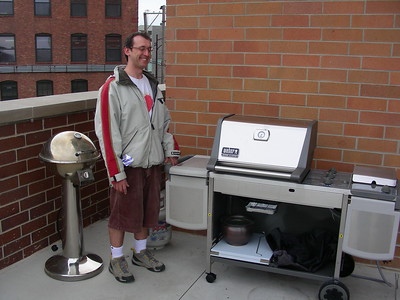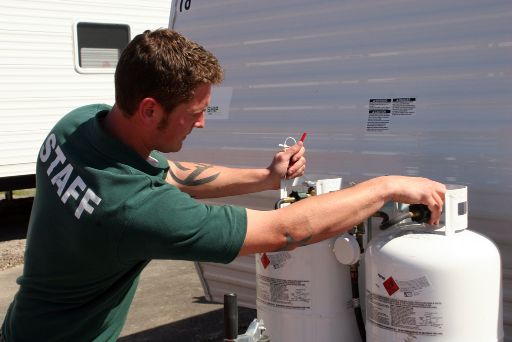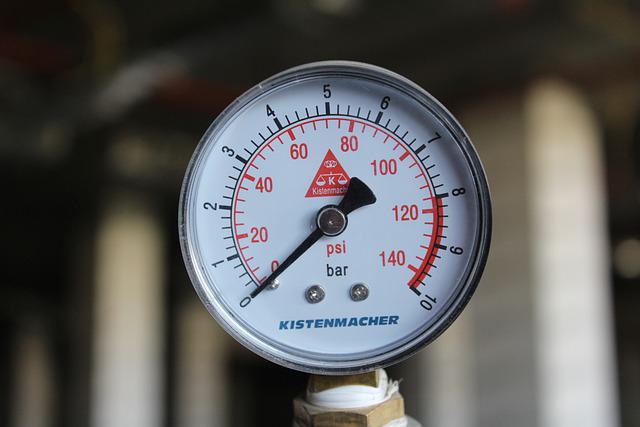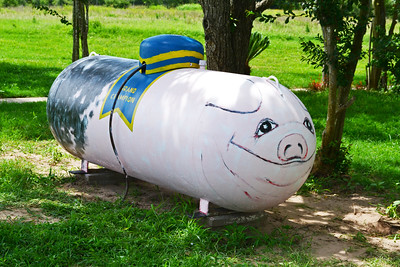
If you have a propane grill and want to use it on a natural gas line, you’re in luck. It is possible to use propane on a natural gas grill, with a few caveats. First, you’ll need an adapter to connect the two types of gas. Second, you’ll need to use a lower heat setting, as propane burns hotter than natural gas. Finally, you’ll need to keep an eye on your equipment, as it may not operate as efficiently as it would with propane. With a little bit of effort, you can use it on a natural gas line.
The orifices of natural gas grills are considerably larger, so make sure that the person doing the conversion is qualified or has experience in doing so. And check with the manufacturer for the specification of the grill you want to convert.
[table id=5 /]
Propane vs. Natural Gas: Why You Need to Understand
Understanding the basics of propane and natural gas helps in making informed decisions for heating and cooking.
Chemical Composition
- Propane (C3H8): Part of the LPG family, stored as a liquid under pressure and offers a high calorific value for hotter burning.
- Natural Gas (CH4): Mainly methane, it’s lighter, stays gaseous and burns cleaner.
Energy Content and Efficiency
- Propane delivers more energy per unit than natural gas, translating to a hotter burn and more efficient heating in some cases.
Availability and Cost
- Propane: Widely available and transportable, ideal for areas without natural gas service.
- Natural Gas: Generally cheaper where pipelines exist but require a fixed-line setup.
Choosing between propane and natural gas often comes down to specific needs, regional availability, and cost factors.
Read related article: Are Propane Grills Bad for The Environment?
How to Convert a Natural Gas Grill to Use Propane
If you want to convert your natural gas grill to use propane, you will need to purchase a propane tank and an adapter hose. Make sure to turn off the gas supply to your grill before you begin. Once you have everything you need, follow these steps:
- Remove the control knobs and regulator.
- Unscrew the natural gas hose from the inlet.
- Screw the adapter hose onto the inlet.
- Connect the propane tank to the adapter hose.
- Turn on the propane tank.
- Replace the control knobs and regulator.
- Test the appliance to make sure it is working properly.
Read related article: Which Gas is Best for BBQ? A Guide to Fueling Your Grill
The Advantages and Disadvantages of Converting
There are a few things to consider when deciding whether to convert your appliance from natural gas to propane. Here are a few advantages and disadvantages to help you make your decision:
Advantages:
- Propane is typically cheaper than natural gas, so you may save money by converting it.
- Propane is more portable than natural gas, so you may be able to take your appliance with you when you travel.
- Propane model typically heat up faster than natural gas grills, so you can start cooking sooner.
Disadvantages:
- Converting your appliance from natural gas to propane may void the warranty.
- If not done properly, converting your appliance can be dangerous.
- You will need to purchase a propane tank and keep it filled, which may be inconvenient.
Which Grills Are Easiest to Convert?
If you want to convert from natural gas to propane, the easiest grills to convert are those with quick-connect fittings. These models typically have a natural gas inlet on the back of the grill, and all you need to do is remove the inlet and connect a propane tank. Some models may also require you to change the orifice, which is the small metal piece that controls the flow of gas.
Check also with the manufacturer is conversion is allowed in that particular model. Otherwise, do not listen to your buddy that he can do it. The last thing you don’t want to happen is an accident such as an explosion.
Read related article: Should You Disconnect Propane Tank from Grill for Winter?
Design Variations to Take Note Of If Converting
Grills are engineered specifically for the type of gas they use, due to distinct characteristics of propane and natural gas. Here’s a concise look at their design differences.
Burner and Gas Flow
Its burners feature smaller orifices to accommodate the fuel’s higher pressure and density, allowing for a hotter flame. In contrast, natural gas grills are designed for lower-pressure gas flow and typically have larger orifice sizes.
Venturi Tubes and Pressure
Venturi tubes on propane grills must mix high-pressure propane with air efficiently, whereas those for natural gas grills are calibrated for lower pressure operation.
Safety and Regulators
They come with regulators designed for high-pressure fuel and have safety features to manage the risks associated with propane’s higher volatility. Natural gas grills utilize regulators suited for lower pressure to ensure a constant, safe fuel flow.
Manufacturer’s Specifications
Each type adheres to manufacturer specifications that match the fuel’s properties, with propane grills requiring higher BTU ratings and specific component materials, and natural gas grills designed for a more continuous fuel supply.
Understanding these design elements is crucial, especially when converting this appliance from one fuel type to another, as it affects not just performance but safety. Always follow the manufacturer’s guidelines for proper use and conversion.
What are the Steps to Convert?
Conversion Process from Natural Gas to Propane
Embarking on the journey to convert your natural gas grill to propane involves gathering necessary components, following a set of procedures, and ensuring safety at each step. Here’s an overview of how to manage this conversion process.
Gathering Necessary Conversion Kits and Components
Firstly, you’ll need to obtain the appropriate conversion kits which usually include propane regulators, gas valves, and burner orifices specifically designed for propane usage. These parts are crucial as they differ from natural gas components due to the varying properties and pressures of propane. Additionally, you may need to acquire new hoses and connectors to handle the higher pressure of propane, ensuring they are compatible with your grill’s model.
Guide to the Conversion Process
The process begins with turning off the gas supply to ensure safety. Then, the existing natural gas parts such as the regulator, gas valves, and burner orifices need to be carefully removed. With the old components out, the next step is to install the new propane regulator and gas valves, followed by fitting the smaller propane orifices into place. Afterward, you’ll attach the new hoses and secure all connections, using thread sealant where it’s needed.
Safety Checks and Leak Testing
Once all parts are installed, conduct a safety check for any gas leaks. This is commonly done with a soapy water solution applied to the connections; the appearance of bubbles indicates a potential leak. Take your time during this process, as rushing can lead to oversight. If you detect a leak at any juncture, immediately shut off the gas and address the issue. No leaks mean you’re almost at the finish line, but a final inspection is still needed to ensure everything is assembled correctly and securely.
Professional Installation Versus DIY
When it comes to actually converting your grill, you’re faced with the decision of whether to hire a professional or to undertake the project yourself. Opting for professional installation is advisable if you’re uncertain about your technical skills or if local regulations mandate professional services for such conversions. This ensures the conversion adheres to safety standards and is executed correctly.
However, if you’re adept at handling home improvement tasks and are confident in your ability to follow technical guides, a DIY approach might be suitable. Just ensure that you are rigorous in following safety protocols. Regardless of your choice, the priority should always be to maintain safety standards, ensuring everything is double-checked and properly functioning before you enjoy the benefits of your grill’s new fuel source.
How Much Does it Cost?
If you have a grill that uses natural gas and you want to convert it to use propane, there are a few things you need to take into consideration. The cost to convert can vary depending on the type and model, the materials needed, and the labor involved.
Some grills can be easily converted with a few tools and some knowledge of how to connect the hoses and regulators. Others may require more work, such as drilling new holes for the hoses or changing out the regulator. In some cases, it may be necessary to replace the entire control panel.
The cost of the materials needed to convert from natural gas to propane is usually under $100. The cost of labor can vary depending on the difficulty of the conversion and the location. You can order conversion kit from Amazon or buy from a local hardware store in your location.
In most cases, it is best to have a professional do the conversion. This will ensure that it is done properly and that there are no leaks. It is also important to make sure that the appliance is compatible with propane before starting the conversion.
Can I Convert Back to Natural Gas?
If you have a gas grill that was originally designed to use natural gas, you may be able to convert it back to using natural gas. The process is generally not too difficult, but it is important to make sure that you follow all the instructions carefully. In most cases, you will need to purchase a conversion kit from the manufacturer or a local hardware store.
Once you have the kit, you will need to follow the instructions carefully to ensure that the appliance is properly converted. In most cases, you will need to disconnect the propane tank and then connect the natural gas line to the grill. Once the grill is converted, you will be able to use it just as you did before.
What are the Pros and Cons of Converting a Grill?
The debate on whether to switch from grilling with charcoal to grilling with propane is one that has been around for years. There are pros and cons to both methods, and ultimately it comes down to personal preference. Here are some of the pros and cons of each method to help you make your decision.
Charcoal grilling:
- Many people believe that charcoal gives food a better flavor than propane.
- Charcoal can be more challenging than propane, and some people enjoy the challenge.
- Charcoal can be less expensive than propane.
Propane grilling:
- Propane is generally faster and easier than charcoal.
- Propane can be easier to control than charcoal grills, making them better for cooking more delicate foods.
- Some people believe that propane does not give food the same flavor as charcoal.
You May Void the Warranty of the Appliance If You Do So
If you’re considering converting your natural gas grill to propane, there are a few warranty aspects you should be aware of to ensure you’re making informed decisions. Let’s dive into what this means for you.
Building Codes and Regulations You Should Know
- Check Your Local Codes:
- Before you start, you need to check with your local building or fire department to understand the regulations that apply to gas appliance conversions in your area.
- Permits Might Be Necessary: Depending on where you live, you might need a permit to legally modify your gas grill.
- Comply with Safety Standards:
- Your conversion kit and process must meet the safety standards set by organizations like ANSI or UL.
- Professional Inspections: After conversion, getting your grill inspected and certified by a qualified technician might be more than just a good practice; it could be a legal requirement.
- Consider Your HOA and Insurance:
- If you’re part of a homeowners’ association, check if there are any rules you need to follow.
- It’s also crucial to inform your home insurance provider about the conversion to maintain your coverage.
How Conversion Affects Your Warranty
- Risk of Voiding Your Warranty:
- Be aware that making modifications to your grill, such as converting it to a different fuel type, will likely void the manufacturer’s warranty.
- Before proceeding, it’s a good idea to contact the manufacturer to confirm the implications for your specific model.
- Warranty for Conversion Kits:
- If your conversion kit comes with its own warranty, it may offer some protection for your modified grill.
- Keep All Documentation:
- Hold onto any paperwork related to the conversion. Receipts, warranties, and professional communications can be critical if you need to navigate warranty or insurance issues later.
The Importance of Professional Certification in Some Areas
- When You Need a Pro:
- Your local regulations may mandate that a licensed professional must perform the conversion. This isn’t just bureaucratic tape; it ensures safety and adherence to building codes.
- Having a professional involved might also be necessary to keep your home insurance policy valid.
- Benefits of Certification:
- Getting a professional certification can give you peace of mind that the conversion has been done correctly and safely.
- Should you ever decide to sell your grill, this can also help maintain its value.
- Get a Post-Conversion Inspection:
- Even if it’s not required by law, having a professional inspect your converted grill is a smart safety step.
- Document Professional Services:
- Keep a record of any services and certifications provided by professionals. These documents can be invaluable for insurance claims or if you sell the grill.
It’s clear that converting your grill is not just a matter of following instructions from a kit. You need to be diligent about legalities and mindful of how such changes affect the appliance’s warranty. By taking these considerations seriously, you can enjoy your newly converted propane grill with confidence and stay on the right side of safety and compliance.
Maintenance and Operation Post-Conversion
After successfully converting it to propane, maintaining and operating the modified equipment requires special attention to ensure safety and optimal performance. Here’s what you need to know about the post-conversion maintenance and operation of your appliance.
A. Differences in Fuel Line Maintenance
- Propane Fuel Lines:
- Inspection Frequency: Propane fuel lines should be checked more frequently for leaks due to the higher pressure of propane gas compared to natural gas.
- Material Durability: Since propane can be harsher on certain materials, ensure that the fuel lines are compatible with propane and check for signs of wear and tear.
- Connections and Fittings: Regularly examine all connections and fittings for tightness as vibration from transportation (for portable grills) and temperature changes can cause loosening over time.
- Regulator Checks:
- Propane regulators are subject to wear: Periodically check the regulator for damage and proper function, as it plays a crucial role in controlling gas flow and pressure.
- Replacement Schedule: Follow the manufacturer’s recommendations for the lifespan of the regulator, and replace it as suggested or if any issues are detected.
- Storage Considerations:
- Tank Condition: Regularly inspect the propane tank for rust, dents, or other damages.
- Ventilation: Ensure proper ventilation where the propane tank is stored to prevent gas build-up.
B. Adjustments to Grilling Techniques Due to Fuel Change
- Heat Output Adjustments:
- Understanding BTUs: Propane generally provides more BTUs (British Thermal Units) than natural gas, which may require adjusting the heat settings to avoid overcooking.
- Controlling Flames: Familiarize yourself with the new flame control knobs to ensure even cooking, as the flame size and response can differ from natural gas.
- Preheating Changes:
- Timing: Propane grills typically heat up faster, so reduce the preheating time accordingly.
- Temperature Monitoring: Use a thermometer to monitor the temperature, as the heat distribution might have changed after the conversion.
- Cooking Technique Tweaks:
- Direct vs. Indirect Heating: Experiment with direct and indirect grilling techniques, as they may produce different results with propane.
- Lid Usage: Adjust how often and how long you keep the lid open or closed, as propane’s higher heat output can affect cooking times and moisture retention.
C. Ongoing Safety Inspections and Best Practices
- Leak Testing:
- Soapy Water Test: Regularly perform the soapy water test on all connections by applying a soap solution and watching for bubbles, which indicate a leak.
- After Tank Changes: Always test for leaks after changing or refilling the propane tank.
- Ventilation:
- Proper Airflow: Ensure the grill is used in a well-ventilated area, especially after the conversion, to avoid the accumulation of potentially hazardous gases.
- Best Practices:
- Safety Distance: Keep the grill at a safe distance from combustible materials, especially since propane tanks are under higher pressure.
- Education: Educate all users of the grill on the changes made, emphasizing the differences in fuel handling and the importance of safety checks.
- Emergency Readiness: Have a fire extinguisher rated for gas fires readily available and ensure everyone knows how to use it.
By understanding the nuances of fuel line maintenance, adjusting grilling techniques, and adhering to a rigorous safety inspection routine, you can enjoy the benefits of your converted grill safely and effectively.

Mike is an experienced propane technician with over 15 years of professional experience in the field. He has dedicated his career to helping customers with their propane needs, from installation to maintenance and repair. Together with Jeremy, he co-founded this website to provide useful information and guidance to customers seeking reliable propane services.




